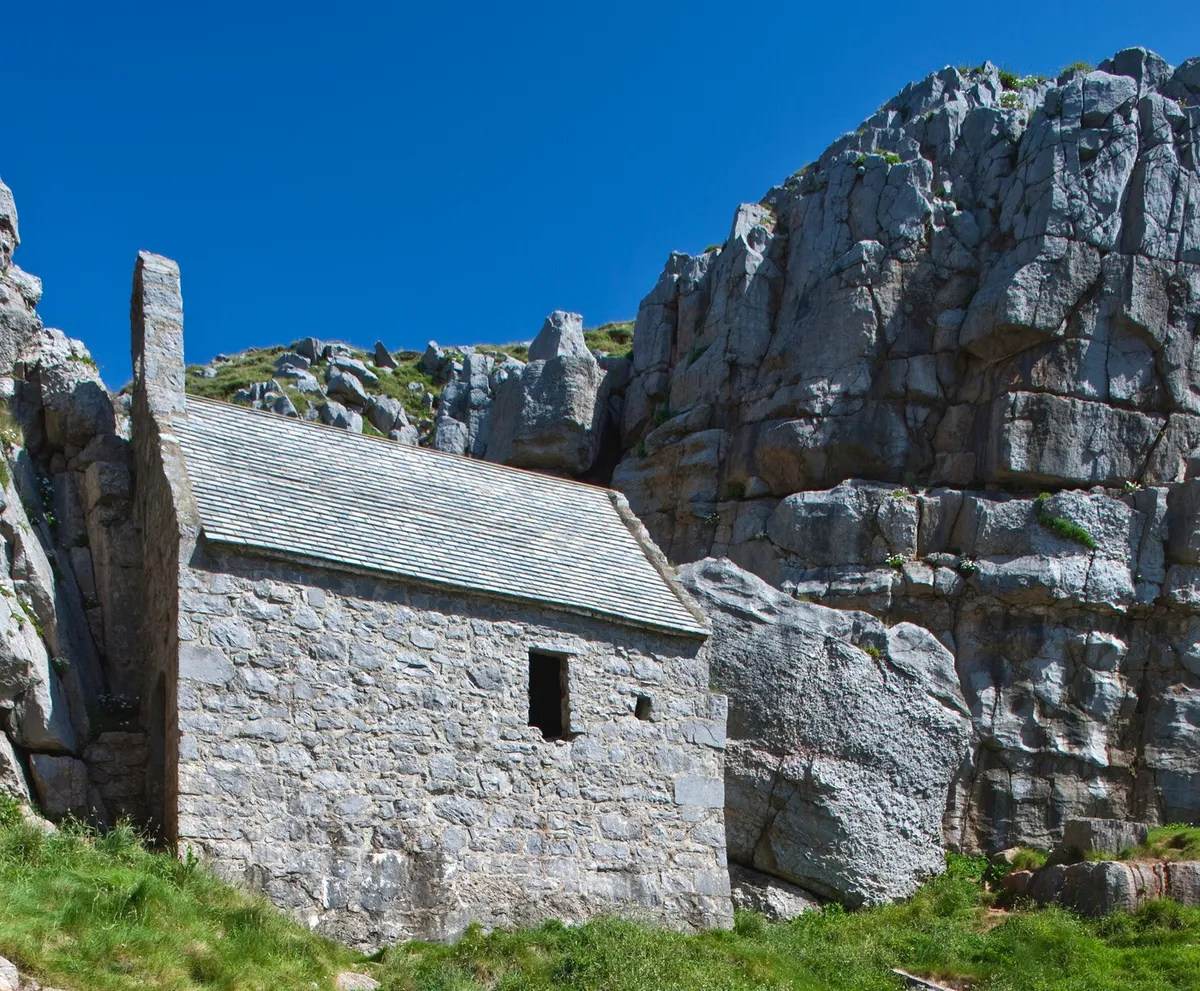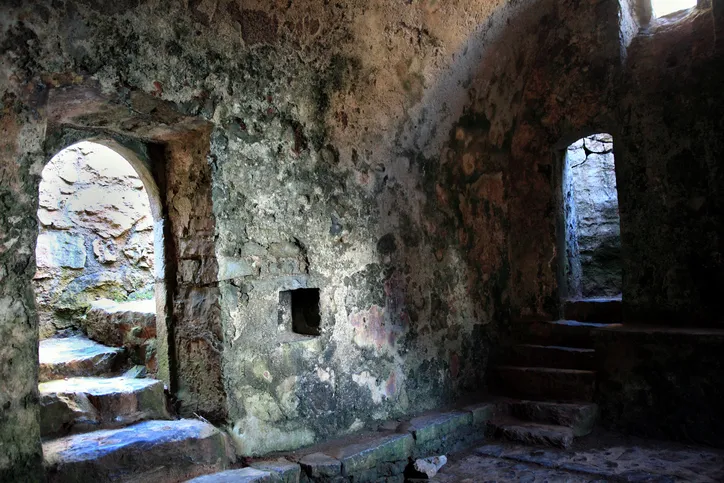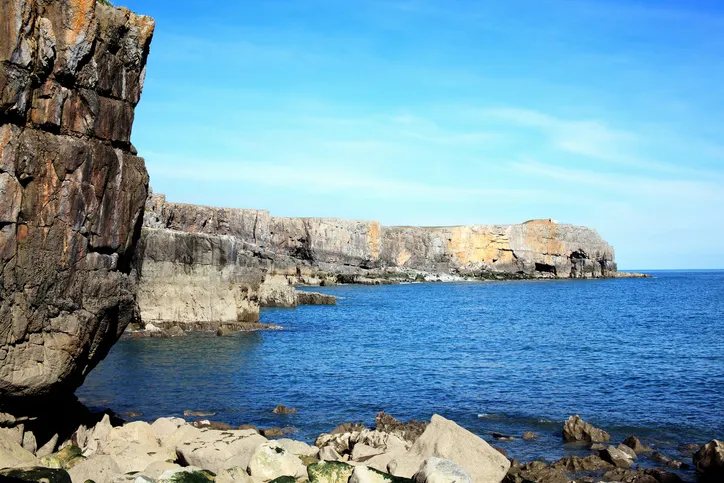Bare and wind-bitten, the flat missile-pasture of Castlemartin Firing Range with its red flags and fences and grassy scents gives suddenly to craggy carboniferous cliffs and the tang of ocean.
These are muddy limestone cliffs, assaulted and salted by sea - solid rock, though many have toppled like church walls, to the beach.

Wedged in a fissure between the crumpled cliffs is St Govan's Chapel. Steep stone steps bring you level with its smooth slate roof. Inside, candles have been left in little recesses. Flakes of plaster still cling to the vaulted roof and weather-scoured stone walls. Thick and textured, they resemble oil-daubed ancient canvas.
Outside, the rock is grey and orange and green grass billows in the wind. Inside, air and colour is muted and filtered by stone. The cobbled floor gleams wetly and the stone altar is damp from wind-blown spray and rain. There is no glass and no wood in the weather-edged windows and doors. Sea-light pours through them painting soft irregular shapes on the walls. The stone chapel is of the cliff, sculpted by wind and light.

It was built in the 13th century, bearing witness to the place where St Govan prayed and slept. Various legends surround St Govan, including one that he was Gawain, an Arthurian knight. More likely he was one of the Celtic Christian saints who arrived from Ireland in a small wooden boat in the 6th Century.
The Celtic saints often travelled between Ireland and Brittany and Wales, sometimes to spread Christianity, sometimes to lead austere lives in wild remote places, where they felt closer to God. Govan was apparently seeking the followers of the abbot who had trained him. Pirates forced him to hide in a crack which opened in the cliffs. And there he stayed, eating fish and drinking from two clear springs, one of which the chapel was built around, and one which became a holy well; both are now dry.

The bell tower is empty too, after pirates stole the silver bell, though angels recovered it and encased it in stone which made it ring truer than the original, when tolled by St Govan.
You can walk out of the chapel down steps in which puddles glimmer, to the boulder beach. The rocks are rough and rain-pocked. The grey cliffs have orange bands and black fissures and curtain-like folds. Sea-smashed and desolate, they shelter the bay like transepts, each with an arched window, and above one arch is a bell tower of rock.
1. Lily Ponds
From Bosherston, follow the coast path over a bridge and alongside Lily Ponds. Stick to the eastern banks, crossing back over once you reach Broad Haven South beach.

2. Firing waves
Cross the beach along the high water line beside dunes. The clamouring sea drives south-west in demented waves to Broad Haven South, its surface whipped white by the heaving and swelling surf which pounds into cliffs and pours over rocks. Foam gathers in whirling flurries and becomes air-borne, shooting up the cliffs to scud over Castlemartin Firing Range – before entering the range, be sure to check that it is open to visitors.
Walk west along the coast path and over Trevallen Downs towards the chapel.
3. The Chapel
St. Govan's Chapel is on the Pembrokeshire Coast Path and borders the Castlemartin Firing Range. After exploring the chapel, follow the road north back to Bosherston.

